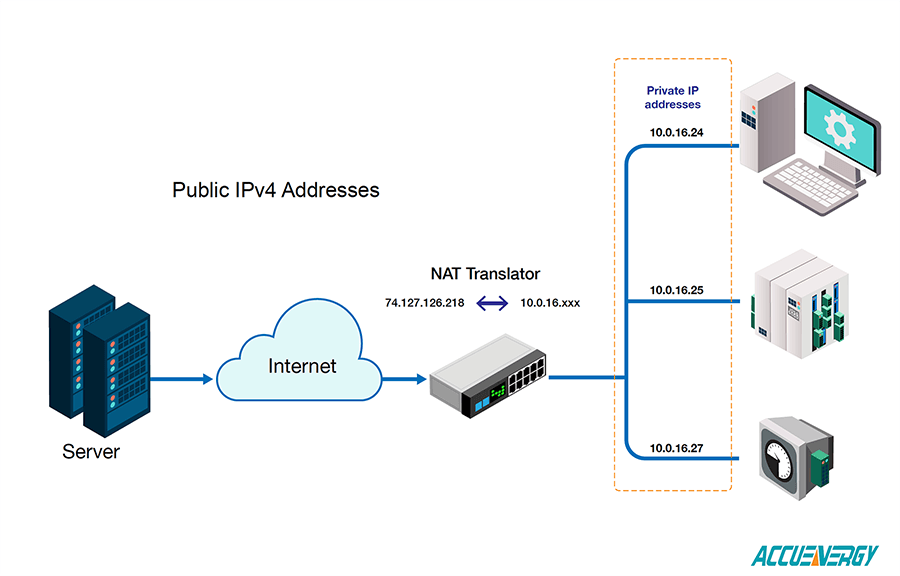Introduction
IPv6 (Internet Protocol version 6) is the newest evolution of how devices connect to the Internet using a 128-bit address system. This latest standard significantly increases the pool of available unique IP identifiers, adds end-to-end encryption security and provides a more efficient network solution for businesses that rely on complex Industrial Internet of Things (IIoT).
It was designed to replace the current 32-bit IPv4 standard which was extended by the use of network address translation (NAT). IPv4 is still widely used by many industries but as IIoT usage continue to grow, it puts a heavier load on Ethernet connected devices. The use of Ethernet driven industrial sensors, meters and PLC are becoming more common deployed and by having IPv6 ready devices future-proofs businesses when the protocol switch happens.
Differences
IPv4 is a decimal based address protocol that supports approximately 4.3 billion unique IP identifiers. In actuality the number of public IP addresses that are accessible is much fewer, which limits the pool of devices that can directly access the Internet without the use of an additional layer of technology such as NAT (Network Address Translation).
- Sample IPv4 address – 174.168.1.254
IPv6 increases the pool of unique IP for devices to 340 undecillion addresses allowing networks to be more efficient by doing away with NAT IP conversions. IPv6 uses eight octets or groups of four hexadecimal digits, separated by colons.
- Sample IPv6 address – 0:0:0:0:0:ffff:c0a8:1fe
NAT was created for organizations that required multiple devices to work off of the same IP address. An extra layer of complexity is added when routers assign a private IP identifier to devices within their network. Electronic devices that want to communicate with other devices or applications outside the local network need to reconcile their private IP addresses by converting it to their assigned public IP. This can cause network issues to be much more complex than intended when troubleshooting. Some devices require an end-to-end connection to enable certain functionality. If the device is behind a NAT, that devices will not be accessible by the remote site. Networks and devices utilizing IPv6 are able to resolve these problems and much more.

IPv6 also mandates IPsec (optional) which provides more secure communication with end-to-end authentication and/or encryption making it much more difficult for man-in-the-middle attacks from occurring. IPsec is an optional feature in IPv4 and discretion is left to the responsibility of the end nodes implement.
Benefits
- Future-ready
- Consistent data delivery from field sensors to enterprise level software
- Efficient network routing
- Increased built-in end-to-end security
IPv6 and Accuenergy
AXM-WEB2 communication module enables IPv6 functionality for Acuvim power meters that are to be deployed in IPv6 web server environments, or to send information via IPv6 enabled SNMP. The IPv6 web server address is generated from the AXM-WEB2 web server in the communications options.
 X
X 
 X
X  X
X  X
X